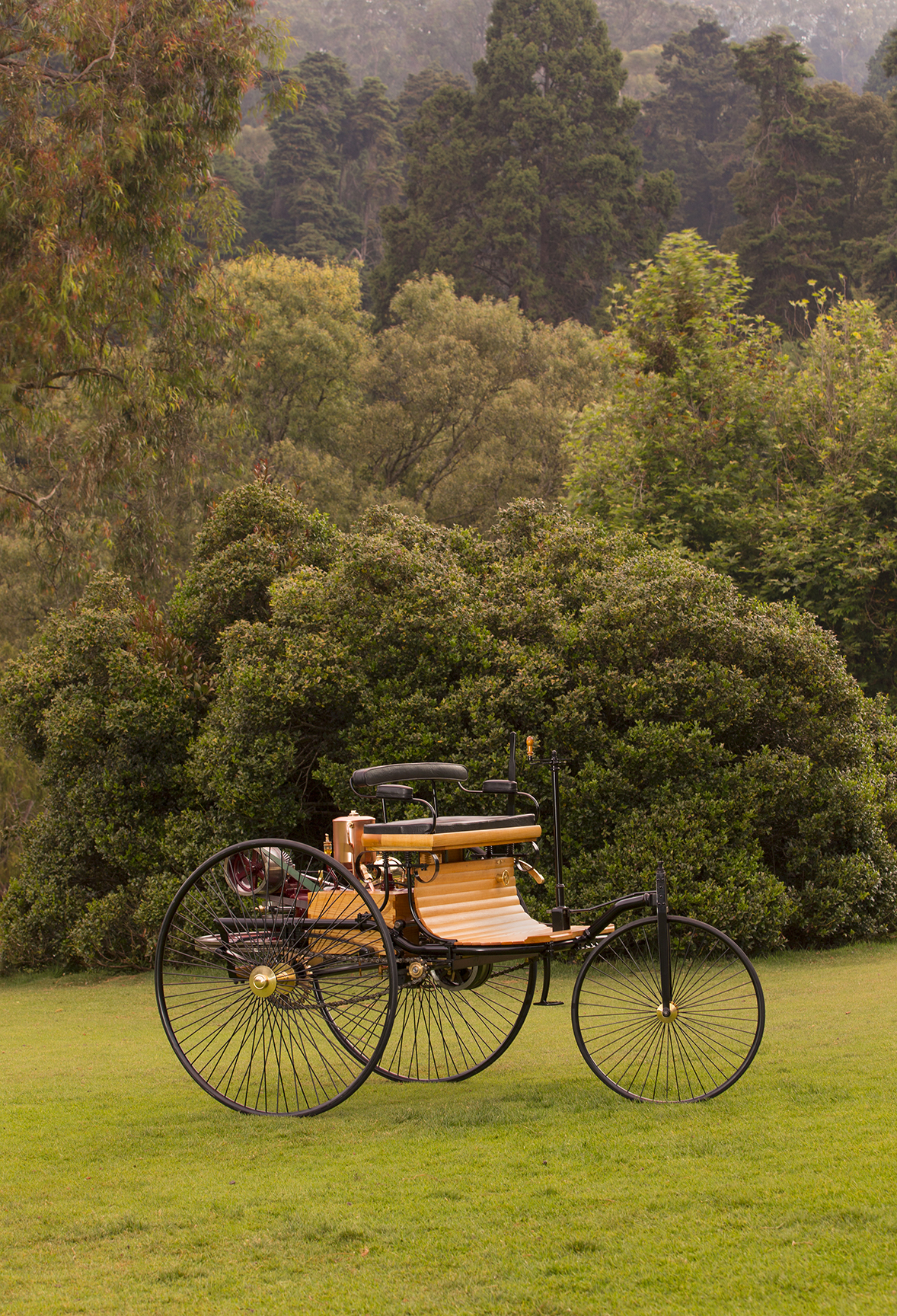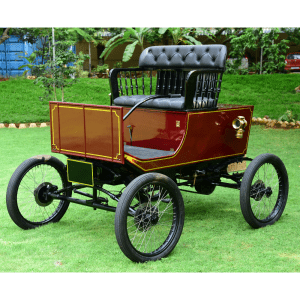The first Benz Patent-Motorwagen, built in 1885, was powered by a 354cc single-cylinder four-stroke engine designed by Karl Benz himself. This engine was mounted between the rear wheels and featured several advanced components for its time, including a coil ignition system and an evaporative cooling method instead of a conventional radiator. The engine initially produced 2/3 horsepower (0.50 kW) at 250 rpm, allowing the Motorwagen to reach a top speed of approximately 10 mph (16 km/h). Later tests revealed that it could deliver up to 0.9 horsepower (0.67 kW) at 400 rpm.
Power from the engine was transmitted to the rear axle using two roller chains, a simple yet effective mechanism for propulsion. The engine itself was considered extremely lightweight for the era, weighing around 100 kg (220 lb). Although it had an open crankcase and a drip oiling system—features that would seem outdated to modern mechanics—it also included a pushrod-operated poppet valve for exhaust, a design still recognizable in engines today.
The engine was stabilized by a large horizontal flywheel, which helped maintain a consistent power output. Fuel was stored in a 4.5-liter tank positioned above the evaporative carburetor. The fuel consumption rate was approximately 10 liters per 100 kilometers, which was reasonable for early automotive technology. Engine speed and power output were controlled using a sleeve valve, which regulated airflow and fuel mixture into the engine.
Overall, the Benz Patent-Motorwagen marked a major breakthrough in automotive history. It was not just the first practical motor car, but also a marvel of early mechanical engineering, combining lightweight design, innovative engine configuration, and clever control systems to pave the way for modern automobiles.












Reviews
There are no reviews yet.